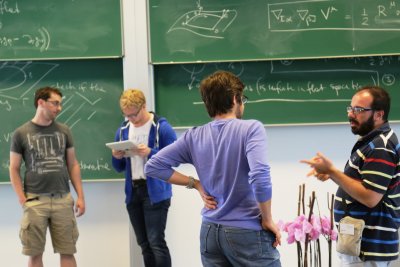Neuroscience - Overview
The mysteries of the human brain
The brain is considered the most complex structure on earth. It is composed of a network of billions of nerve cells. Our goal is to understand how cognitive phenomena can arise from the collective interactions of these many neural elements. In particular, we investigate how the brain’s networks and subsystems can self-organize their information processing capacity to give rise to perception and action.
We firmly believe that by studying the organizational principles of neural information processing through computational modelling, we can further our understanding of brain function and organization and also make progress towards building a new generation of intelligent artificial information processing systems with potentially profound social and economic implications.
Most of our research focuses on:
- the mathematical analysis of high-dimensional spatio-temporal activity patterns that emerge in defined neuronal networks of animal and human brains during cognitive and executive functions and are provided by the associated experimental institutions,
- the simulation of biologically inspired neuronal networks and
- the implementation of insights gained into mechanisms underlying visual perception, action, and learning in robotic systems.
Further Information:
Groups
Find more information about the research done at FIAS by visiting our research groups.
Conferences
Scientific enhancement thrives trough the continuous exchange with scientists from different organisations and countries. More information about our conferences.
Projects
From the connections between two neurons to autonomous learning robots – FIAS scientists work on many exciting topics.


